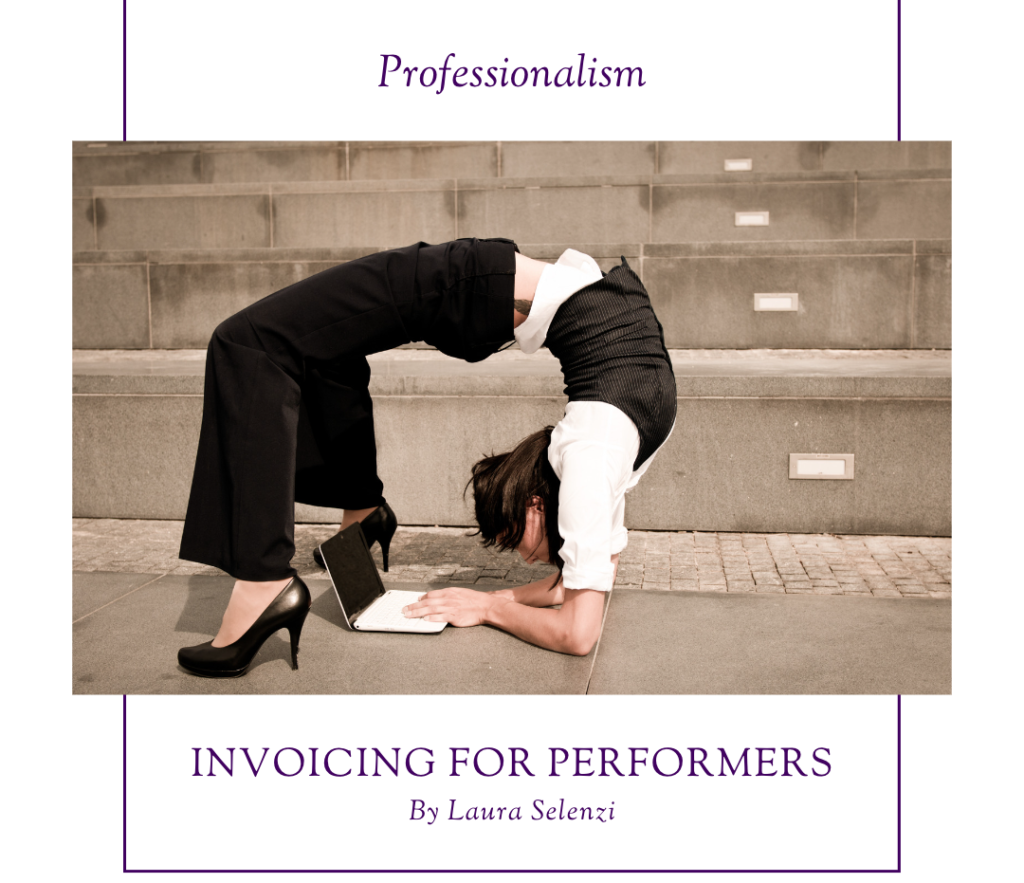Invoicing for Performers

Whether you're a dancer, a circus artist, a musician or even a professional mermaid; as a performer who is an independent contractor, you are required to create and submit your own invoices in order to receive payments from clients. This is an important skill for a self-employed performing artist, and is very easy to do.
If you are booking your own show, when discussing your rates with your client, let them know that you will send an invoice. Companies require this for their accounting department to process the payment, and for their records. This shows professionalism and that you are running a legitimate performing arts business!
Always provide a description of the services you will provide so the client knows what they’re paying for. Use the same language that you did in your quote so the customer can see they will be getting what they expect. For example, "Two 15-minute sets of aerial silks" "One 10 minute fire show with a cast of three, using fire staff and fans, including eating fire" This can also help them see the value in your work for clients who question your performance fees. In this case, you could break out your rehearsal fee, performance fee, travel expenses, admin expenses, cost of supplies, insurance, etc. Alternatively, you could include a note that describes all that your rate includes, for example: "This fee includes rehearsal time, travel expenses, admin expenses, performance fee, and all supplies and equipment".
Your invoices should be to be concise, but include enough detail that your client doesn’t need to come back with questions.
The most important thing is promptness.
Late or missing invoices are a headache for clients and will most certainly result in late payment. Having to remind a contractor to invoice so that THEY can get paid is a hassle, and can make you look disorganized.
Often payments need authorization by higher-ups, so the longer it takes for them to receive your invoice, the more likely it is there will be delays in payment. Also, many companies issue payments periodically in cycles. If you delay invoicing, you may miss a cycle, and then payment will be delayed until the next round.
Many free templates can be found online, that you can customize and save to your computer for future use.
- Quickbooks provides one here: Quickbooks invoice templates: contractor
- We have our own template anyone can customize and use here: Serpentine Performer Invoice Template
Your invoice should include:
- Your name, or the name of your group/company and your contact information: address, email address, phone number
- "Invoice To" : Your client's name and information
- The Invoice number (this is a unique, sequential code that is systematically assigned to your invoices. This is a tool to make sure that your income is properly documented for tax and accounting purposes)
- The event name, and date(s) you provided your services
- A description of your services rendered
- Cost per service, number of services, and total amount. You can also write it as a single rate for the entire event.
- If applicable - for equipment rentals and cost of materials: a description and cost per unit
- The subtotal of all the above
- Tax if applicable (if your business is collecting and remitting HST)
- Total Fees Owing
- Payment methods that you accept
In our case, an address for receiving your E-transfer, or if your invoice is over $1000, please provide your banking information via a void cheque in an email.
Example of an invoice from a self-employed performer:



